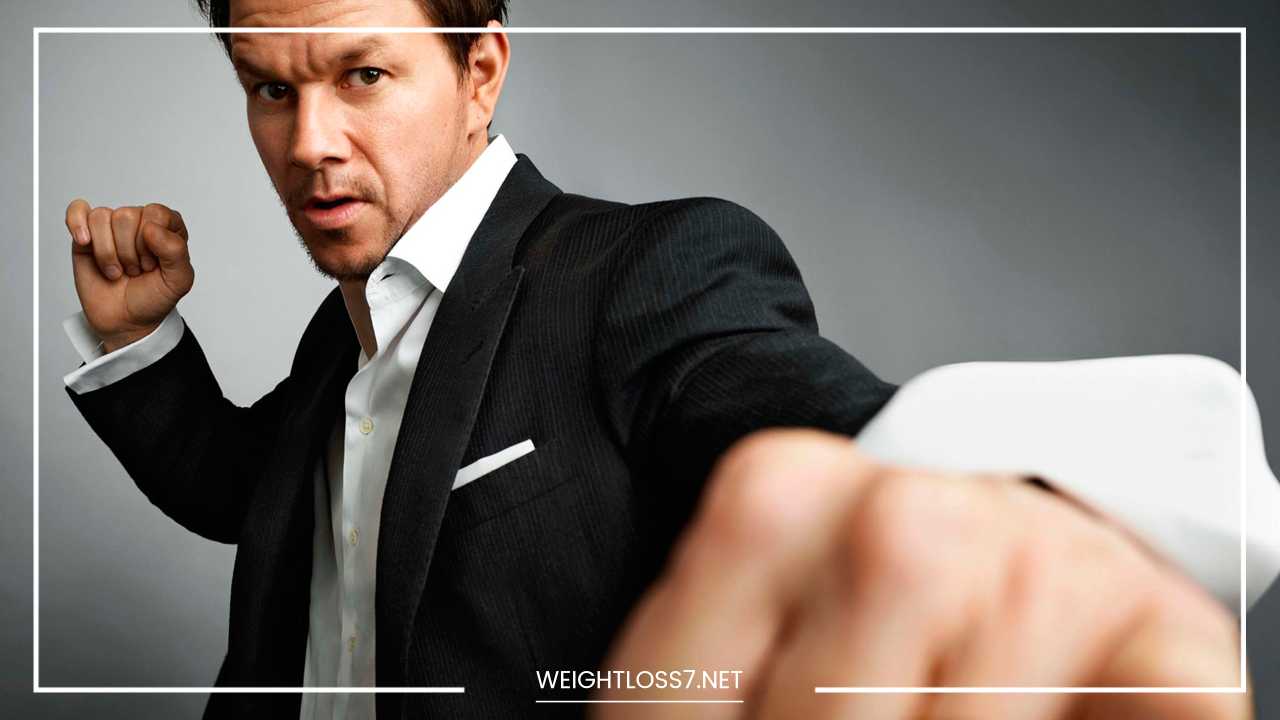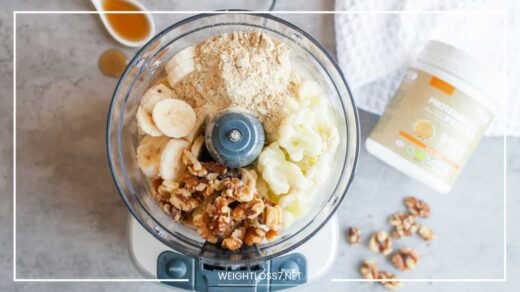Research on Mark Wahlberg Diet and Workout for the Fighter

Mark Wahlberg Diet and Workout
Becoming Mickey Ward: A Deep Dive into Mark Wahlberg’s Transformation for “The Fighter”
Mark Wahlberg’s journey into the role of Mickey Ward in the 2010 film “The Fighter” is more than just a Hollywood transformation.
It’s a masterclass in dedication, pushing the boundaries of physical fitness to embody the raw resilience of a weathered boxer.
This blog post delves into the intricate details of Wahlberg’s diet and workout routine, offering a roadmap for those seeking a similar physique transformation, but with a crucial emphasis on safety and personalized adaptation.
The Mickey Ward Physique: Deconstructing the Workout
The foundation of Wahlberg’s transformation for “The Fighter” lies in his grueling workout regimen. Sources suggest he often trained twice a day, with sessions exceeding two hours each.
His program wasn’t about mindless repetition; it was a strategic assault on building a physique that mirrored Mickey Ward’s fighting spirit.
Here’s a breakdown of a potential workout inspired by Wahlberg’s routine, with a strong emphasis on consulting a certified trainer for a personalized approach:
-
Warm-up (3 minutes each):
- Supine band overhead hold: This exercise activates the shoulders, core, and improves stability for exercises to follow.
- Hip bridges with band pull aparts: Targets the glutes, hamstrings, and core, promoting overall strength and preventing injuries.
- Pushups to mountain climbers: This dynamic combo works the chest, shoulders, triceps, core, and improves coordination.
- VersaClimber (or alternative cardio): An excellent tool for building cardiovascular endurance, mimicking the demands of boxing.
-
Strength Training:
- Barbell floor press with dead bug: This compound exercise builds chest, shoulder, and triceps strength while engaging the core for stability.
- Single-leg band RDL (Romanian Deadlift): Strengthens the hamstrings, glutes, and core while improving balance and stability, crucial for boxing.
- Farmer’s Walk with kettlebells: This functional exercise builds grip strength, core stability, and overall work capacity.
- Kettlebell deadlift: Targets the posterior chain (hamstrings, glutes, lower back) for explosive power and injury prevention.
- Half-kneeling unilateral overhead press: This variation of the overhead press strengthens the shoulders while improving core stability and rotator cuff health.
- Battle Ropes: This high-intensity exercise builds cardiovascular endurance, core strength, and upper body power.
- Sled push (until fatigue): This explosive exercise builds lower body power, mimicking the pushing force needed in boxing.
Wahlberg’s Fuel: Powering the Fighter’s Body
Diet is the other critical pillar in Wahlberg’s transformation. Reportedly, he consumed 6-7 meals a day, with a strong focus on lean protein sources to support muscle growth and repair.
However, it’s important to understand the “why” behind the “what” when examining his approach. Here’s a possible dietary structure inspired by his plan, but with additional insights:
-
Breakfast (around 3:15 AM): Steel-cut oats with peanut butter, blueberries, and eggs. This provides sustained energy through complex carbs from oats, healthy fats from peanut butter, protein from eggs, and antioxidants from blueberries.
-
Post-workout Meal (around 5:30 AM): Protein shake and turkey burgers (quantity based on individual needs). The protein shake provides a quick source of protein to jumpstart muscle repair, while the turkey burgers offer sustained protein and healthy fats.
-
Lunch: Tilapia fish, sauteed spinach, sweet potato patty, and a moderate amount of rice. This combination provides lean protein from fish, essential vitamins and minerals from spinach, complex carbs for energy from sweet potato, and some simple carbs for quick energy from rice.
-
Snack (afternoon): Turkey meatballs (around 10). A convenient protein source for maintaining muscle protein synthesis throughout the day.
-
Dinner: Grilled chicken salad with hard-boiled eggs, avocado, cucumber, and tomato. Lean protein from chicken, healthy fats from avocado, vitamins and minerals from vegetables, and a small amount of complex carbs from a light salad dressing.
Beyond the Macros: A Holistic Approach to Nutrition
While Wahlberg’s diet emphasizes protein, a successful approach goes beyond just macronutrients (protein, carbohydrates, and fats). Here are some crucial aspects to consider for a healthy and sustainable transformation:
-
Micronutrients: Don’t underestimate the power of fruits and vegetables! They are packed with essential vitamins and minerals that your body needs to function optimally and support overall health.
-
Portion Control: While Wahlberg’s diet focuses on lean protein, portion sizes are still vital. A qualified nutritionist can guide you on appropriate portions based on your individual goals, activity level, and body composition.
-
Macronutrient Balance: A balanced diet includes protein, carbohydrates, and healthy fats in appropriate ratios. While Wahlberg’s emphasis on protein is crucial for muscle building, complex carbohydrates provide sustained energy for workouts and recovery, while healthy fats are essential for hormone regulation, cell function, and satiety. A registered dietitian or nutritionist can help you determine the ideal macronutrient breakdown for your specific needs.
-
Fiber: Fiber, found in fruits, vegetables, and whole grains, plays a vital role in digestion, gut health, and overall well-being. Including a good amount of fiber in your diet can help with maintaining a healthy weight, managing blood sugar levels, and keeping you feeling fuller for longer.
-
Hydration: Water is essential for every bodily function. During intense training like Wahlberg’s, staying adequately hydrated is crucial for optimal performance and recovery. Aim to consume water throughout the day, especially before, during, and after workouts.
Individualized Needs: Building a Sustainable Plan
It’s important to remember that Mark Wahlberg’s transformation for “The Fighter” was achieved under exceptional circumstances with the support of a dedicated team of professionals, including a trainer and likely a nutritionist.
His intense workout schedule and specific dietary needs may not be suitable for everyone. Here’s why a personalized approach is key:
-
Fitness Level: A beginner will have different training needs compared to a seasoned athlete. A qualified trainer can design a program that progressively challenges you while considering your current fitness level.
-
Body Composition Goals: Are you aiming to build muscle, lose weight, or improve overall fitness? A personalized plan will target your specific goals with appropriate exercise selection and dietary strategies.
-
Underlying Health Conditions: Certain health conditions may require modifications to a workout or diet plan. Consulting with a healthcare professional before starting any new program is crucial.
Building Your Inner Fighter: A Sustainable Approach
While Wahlberg’s dedication is awe-inspiring, it’s important to prioritize a sustainable approach to fitness and nutrition. Here are some tips for building your own inner fighter:
-
Find Activities You Enjoy: Exercise shouldn’t feel like punishment. Choose activities you find fun and engaging, whether it’s boxing-inspired HIIT classes, weight training, or team sports.
-
Focus on Progress, Not Perfection: Building a healthy lifestyle is a journey, not a destination. Celebrate your progress, big or small, and embrace occasional setbacks as learning opportunities.
-
Prioritize Rest and Recovery: Your body needs time to repair and rebuild muscle. Schedule rest days and incorporate active recovery activities like yoga or stretching.
-
Listen to Your Body: Don’t push yourself to the point of injury. Pay attention to your body’s signals and adjust your workout intensity or duration as needed.
-
Make it a Lifestyle: Sustainable change comes from integrating healthy habits into your daily routine. Find a balance that works for you and prioritize your overall well-being.
Beyond Wahlberg: Exploring Alternative Training Methods
While Mark Wahlberg’s approach for “The Fighter” is impressive, it’s not the only path to achieving a sculpted physique. Here’s a look at some alternative training methods that can be incorporated into your fitness journey:
-
High-Intensity Interval Training (HIIT): This method involves alternating short bursts of intense exercise with periods of rest or low-intensity activity. HIIT offers a time-efficient way to burn calories, improve cardiovascular health, and build muscle [3]. Boxing itself can be considered a form of HIIT, offering a dynamic and engaging workout.
-
Functional Training: This training style focuses on exercises that mimic everyday movements, improving overall strength, stability, and balance. Exercises like lunges, squats, and core work fall under this category, making you stronger and more prepared for daily activities [4].
-
Bodyweight Training: Utilizing your own body weight for resistance can be a convenient and effective way to build muscle. Exercises like push-ups, pull-ups, dips, and lunges can be modified to suit different fitness levels, making them a great option for beginners and advanced exercisers alike [5].
-
Circuit Training: This method combines various exercises into a circuit, with minimal rest between each one. Circuit training elevates your heart rate, promotes muscular endurance, and can be a fun way to break up your workout routine [6].
Finding Your Training Fit
The best training method is the one you enjoy and can stick with consistently. Here are some tips for finding the right fit for you:
- Consider your interests: Do you enjoy working out in a group setting, outdoors, or at the gym? Choose activities that align with your preferences.
- Start slow and progress gradually: Don’t jump into an intense workout regimen if you’re new to exercise. Begin with a manageable program and gradually increase difficulty as your fitness level improves.
- Seek professional guidance: A certified trainer can create a personalized workout plan that addresses your specific goals and limitations.
Fueling Your Body for Different Training Styles
While protein plays a crucial role in muscle building, the ideal diet will vary depending on your chosen training method. Here’s a brief overview:
- HIIT and Circuit Training: These methods require readily available energy sources. Focus on a balanced diet that includes complex carbohydrates for sustained energy, lean protein for muscle repair, and healthy fats for satiety.
- Functional Training and Bodyweight Training: These methods may require slightly less overall calorie intake than HIIT or circuit training, but still prioritize a balanced approach with complex carbs, protein, and healthy fats.
Remember, consulting a registered dietitian or nutritionist can help you create a personalized meal plan to optimize your training and achieve your desired results.
Safety First: Avoiding Injuries
Pushing yourself is important for progress, but prioritizing safety is paramount. Here are some tips to avoid injuries:
- Proper form: Always prioritize proper form over lifting heavier weights. Focus on controlled movements and engaging the correct muscle groups.
- Warm-up and cool-down: Dedicate time to warm-up exercises to prepare your body for exertion and cool-down stretches to improve flexibility and prevent muscle soreness.
- Listen to your body: Don’t ignore pain signals. Take rest days when needed and avoid pushing yourself to the point of injury.
- Start with lighter weights: Begin with a weight that allows you to maintain proper form throughout the exercise. Gradually increase weight as you get stronger.
Building Your Inner Strength: The Mental Component
Transforming your physique is as much mental as it is physical. Here are some strategies to strengthen your mindset:
- Set realistic goals: Focus on achievable milestones to stay motivated. Celebrate small victories along the way.
- Find a workout buddy: Training with a friend or partner can provide accountability and support, making the process more enjoyable.
- Visualize success: Imagine yourself achieving your goals. Visualization can be a powerful tool for motivation and mental focus.
- Embrace challenges: View setbacks as opportunities to learn and grow. Maintain a positive attitude and don’t give up on your goals.
Final Word: A Transformation Beyond the Physical
Mark Wahlberg’s transformation for “The Fighter” is a testament to the power of dedication and discipline. By understanding the principles behind his approach and adapting them to your own needs, you can craft a personalized path towards a healthier, fitter you.
Remember, a successful transformation goes beyond the physical. It’s about building mental resilience, developing healthy habits, and fostering a positive relationship with your body. Embrace the journey, celebrate your progress, and discover the inner fighter within yourself.

















